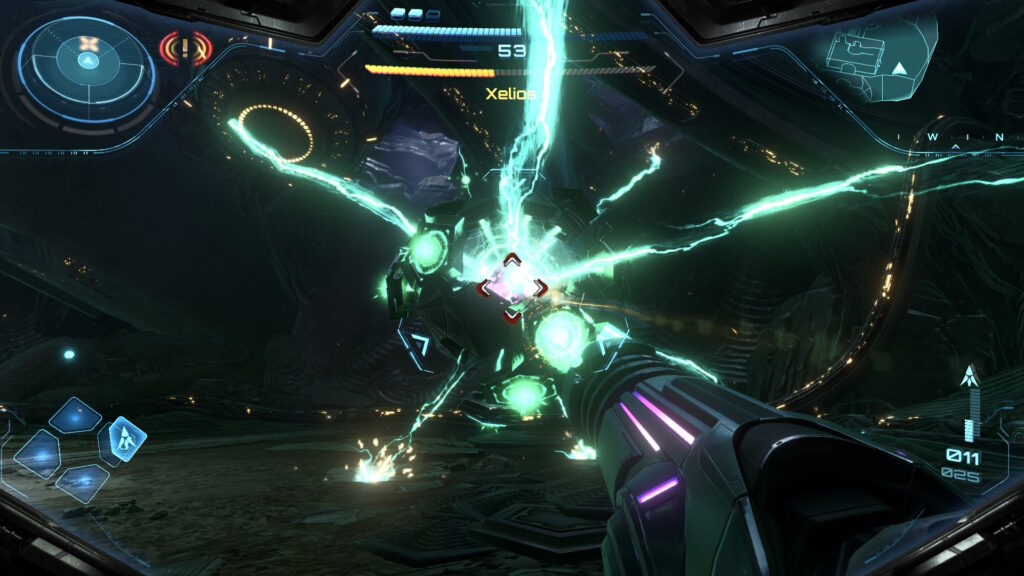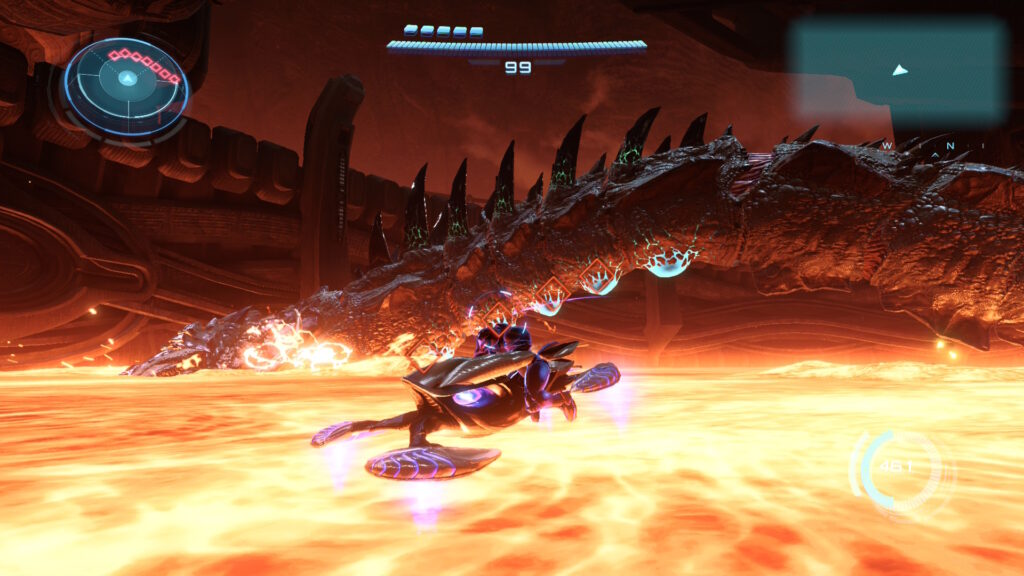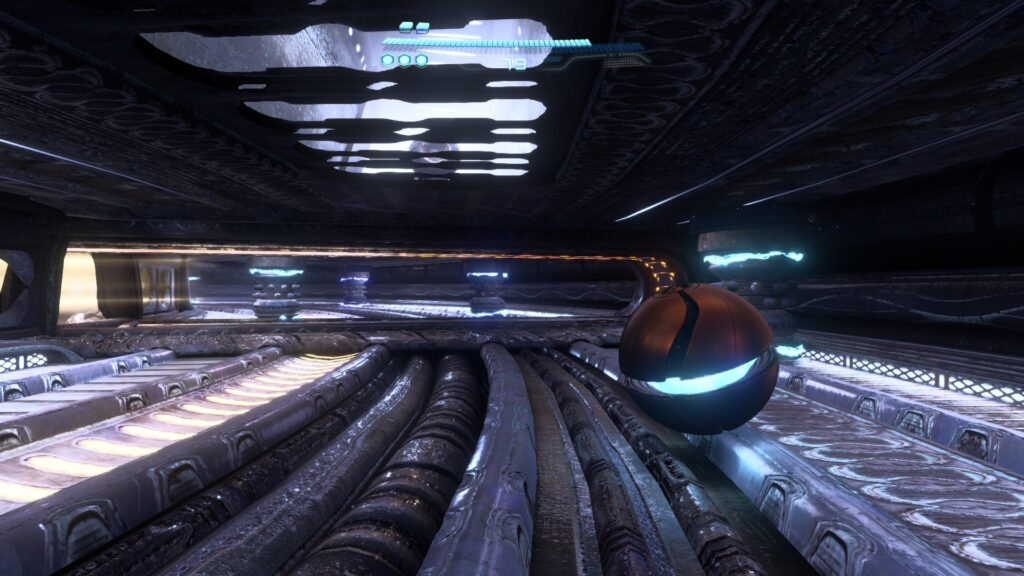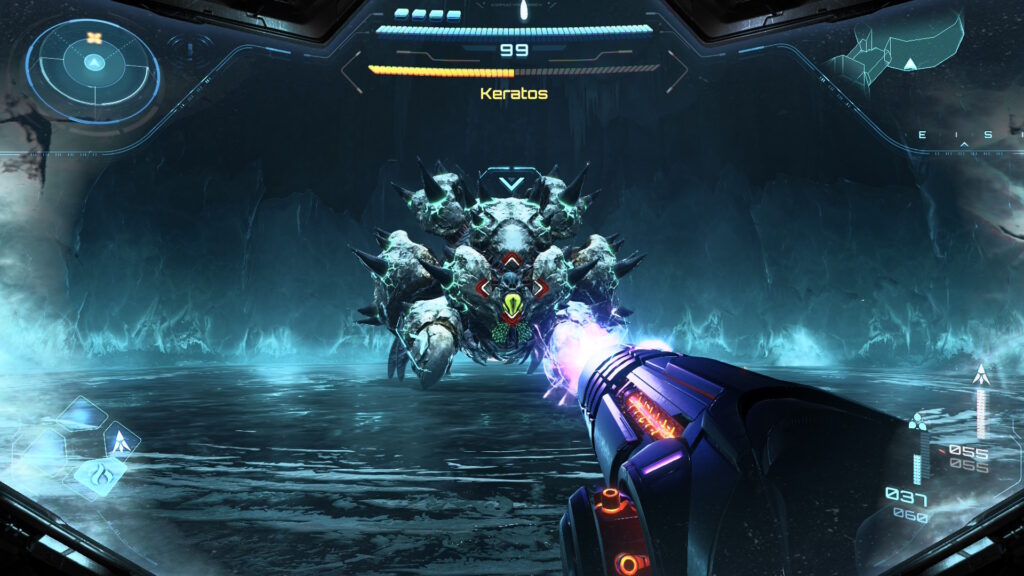- Genre: FPS
- Platform: Switch 2
- Also Available On: Switch

This is a game searching for a core, and that seems to be something that was recognized by the team. It is often a really good first-person shooter with level and boss segments that rival any recent story-focused FPS campaign. It is just as often an excruciatingly boring experience driving across a barren desert. It is also frustratingly in opposition with what a Metroidvania wants to be to the point that I would argue this has no real Metroidvania elements. I wouldn’t go as far as to say this is a bad game, and I admittedly did generally find it to be fun, but it is obviously something that had troubled development.

There’s points where this game just works and still feels like Metroid Prime and it’s brilliant. The first pass through each region when you have the right tools is pretty universally fun and is universally capped by a really good boss fight at the end of the segment. It’s in these places where the game really feels like Prime. You’ve got a little puzzling, a little combat, a little platforming, and a fun upgrade somewhere along the way. All of this is backed by it running at 120 FPS on Switch 2 and a modern refresh of controls courtesy of the Prime remaster to really support a better overall game flow than on the Gamecube. The problem is that things beyond the core didn’t really work out well.
Some of these things are small. For example – mouse controls. This is something that should have been dead simple. Implement the mouse like a mouse that exists on PC and FPS fans understand and has 30 years of working examples. Except they didn’t do that. They virtualized the Wii pointer controls – which were good when you had a physical object you were pointing and called it a mouse. You don’t mouse to turn, you mouse to push the cursor to the screen edge to start turning. Within the screen boundaries you’re basically moving a cursor. It is not mouse controls and it does not work well like it does on a Wii Remote. This is something that any PC FPS developer would point at and go “this is not right” and fix immediately.

But then there’s larger problems like the fact that this doesn’t do the Metroidvania thing well. The only times that I bothered to backtrack were the couple of times that I physically could not get into a zone because of an upgrade blocker. Both times it happened were particularly annoying because the game started by saying something along the lines of I can do things “in the order I want” only for that to be immediately obvious bullshit. I would spend 5 minutes trudging across the desert only to hit a blocker where it then becomes obvious that I needed to trudge 5 minutes in a different direction to a zone that had the upgrade I actually needed, at which point I then needed to trudge 5 minutes the other way to base camp to get the upgrade since it was provided as a data card.
Beyond those kinds of “oops” incidents, I really didn’t do any re-traversal or backtracking. I kind of went through each of the 5 core zones once – except for a couple very particular quick trips back to the electric area for short segments. There just isn’t really any pull in the game for me to go back and collect all the upgrades because they just aren’t overly necessary, and there weren’t any core upgrades that really required you to do anything other than the linear first-pass through zones.

And then there’s the largest problem of the open world changes that just did not work out. There’s multiple things that went wrong with this whole segment of the game.
One of them is the collection mess, where the player is required to collect a bunch of green crystals scattered about to get to the final boss fight. You do eventually get a green crystal radar, but the point at which I got it was after I had already gotten to about 80% of crystals collected and finished the rest of the game and was literally trying to just wrap the one specific section. It’s boring, tedious, and too long to be something that blocks progression.
The other thing is that general gameplay in here is just not that compelling. There’s occasional combat, but it’s against the same three or four enemy types so they wear out their welcome rather quick. There’s some upgrades that you can find in little shrines but compared to other open world Nintendo experiences like the latest two Zelda games they don’t come close to the same quality bar. There’s some optional story bits with the NPCs that you see in the game, but you stumble upon them so they are purposefully disconnected from core plot and don’t have a real push behind them.

The final nail in the coffin is then just how big the desert is. The thing that made the original Prime trilogy work is that everything was interconnected and getting between zones was relatively fast, but also that you could find new stuff and new shortcuts with the upgrades you just found. The desert completely breaks that. It’s just open so there’s no real blockers to unblock, and because it’s open it’s not fast to get around. Any need to get across the desert is just slow garbage time. I finished the game in around 10 hours, but it was pretty clear that compressed down without the desert this was a much smaller game than the original trilogy. The fact that there was no fast travel option – at least to get back to the hub – was a pretty egregious omission that would have at least resolved some of the issue of needing to get around and encouraged me to hop quickly back to other zones to check for new things.

I guess at the end of the day this is a game with problems. It’s not an unplayable mess, and the core gameplay within zones really is a lot of fun, but it’s just surrounded by things that prevent the game from reaching the heights of previous Prime titles. The team mentioned that given the extended development they chased gameplay elements that both didn’t work out and had already soured in the wider gaming community, and it’s pretty clear that this was just finished to allow the team to move on to better things. I hope that Retro gets a chance at a Prime 5, because the combination of quality in Prime Remastered and the technology that they have in place for Prime 4 show that the team is probably now ready to stretch its legs on the series again after having to rebuild, but this is definitely an unfortunate stumbling block along the way.








